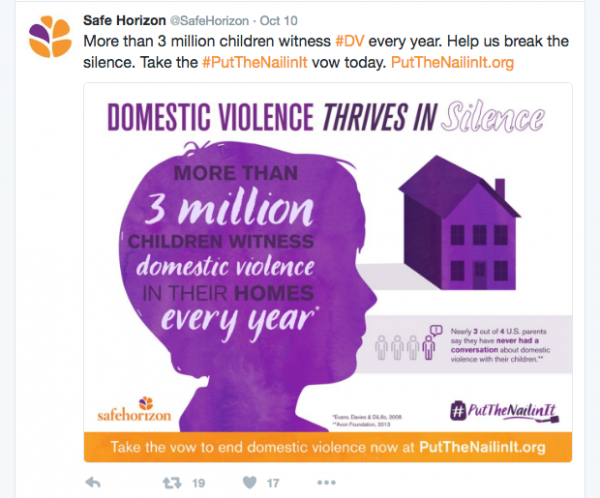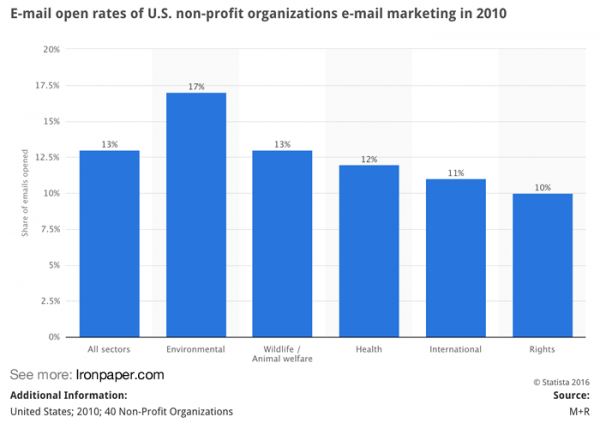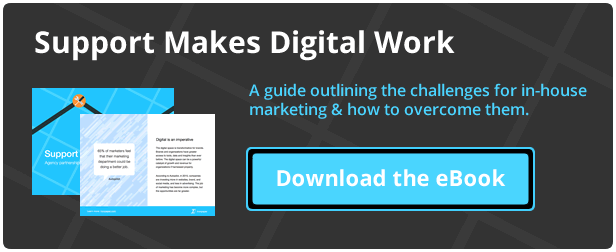

Email marketing can be a critical tactic for nonprofit communication efforts, yet maintaining useful, segmented and active email marketing lists can be challenging. Even the best lists suffer annual decay due to contacts changing addresses, abandoning old accounts, or unqualified leads opting out of communications. These 5 steps for growing nonprofit email lists can help combat the natural losses and build an engaged base of contacts.
Email marketing databases naturally degrade by approximately 22.5% every year. — Hubspot
1. Enable email signups on your website
Add sign-up opportunities to the nonprofit website. Opportunities include:
When collecting contact information on the web it helps to collect the minimum information necessary and make forms short and easily navigable.
Don't ask for new subscribers daily on social media. But a monthly tweet to followers and a sign up tab on the Facebook page won’t overdo it. Be sure these social efforts communicate the value of providing an email address. Use an appealing, vibrant image and a simple, succinct CTA.

Give new contacts every opportunity to join the nonprofit mailing list:
Growing nonprofit email lists is easier with quality content to offer. Give supporters a reason to provide their email address. This can be exclusive access to content, a special opportunity, or registering them for a webinar or offline event.
Other growth campaign opportunities can include:
Also, ensure that your email content offers value related to the possible reasons they signed up to begin with. Understand your engagement levels by studying open and click rates, as well as conversion data relating to email marketing. Nonprofit marketing efforts need to make frequent use of web analytics and engagement data to improve their communications.

In 2015, the number of emails sent and received per day total over 205 billion. — Radicati
The average person receives many daily emails. Make sure that the email your nonprofit is sending is inspiring, useful and timely. Put the readers’ needs first. Before blasting subscribers with a “great email campaign” consider whether the reader will benefit from the information shared. If the nonprofit is the only one gaining from the email, don’t press send.
Between 2015 and 2019 the average number of email accounts per user ratio will grow from an average of 1.7 to 1.9 accounts per user. — Radicati
Along with these strategies to build email lists, there are two things the nonprofit aiming to grow its email list should avoid.
Before giving in to data decay entirely, one last strategy to consider. The nonprofit can reinvigorate a stale email list with an opt-in campaign. Develop an engaging opt-in message and send it to the old list members to encourage those who wish to remain contacts to re-opt-in while promising to remove all contacts who don't respond.

Growing nonprofit email lists sources:
Advice and Tips for Nonprofits on Growing Your Email List. (n.d.). https://www.nonprofitmarketingguide.com/resources/advice-and-tips-for-nonprofits-on-growing-your-email-list/#1448659606099-02b072eb-a3b7
HubSpot. (n.d.). Database Decay Simulation. https://www.hubspot.com/database-decay
Radicati Group. (2015). Email Statistics Report. https://www.radicati.com/wp/wp-content/uploads/2015/02/Email-Statistics-Report-2015-2019-Executive-Summary.pdf
by Jonathan Franchell, CEO of Ironpaper - For more tips and hacks: Need to remove a new line after h1 tags? Both web designers and SEO practitioners need to employ headline tags: H1, H2, H3 in several ways to improve web page structure and tag...

The marketing industry is transforming significantly due to generative AI and increasing market complexity. Gartner's prediction of a 25% decline in traditional search traffic suggests that the era of search engines is dying. AI tools, particularly...

The Crowded Arena of the IT Marketplace Updated December 2024 The Information Technology (IT) landscape is experiencing rapid growth and intensifying competition. IT spending is projected to reach nearly 5.1 trillion U.S. dollars in 2024, a...

Updated December, 2024 The field of digital marketing is evolving rapidly in response to new technology and changing buyer expectations. To help career-minded marketers, we’ve rounded up the top 10 skills needed to succeed in the field. These are...
